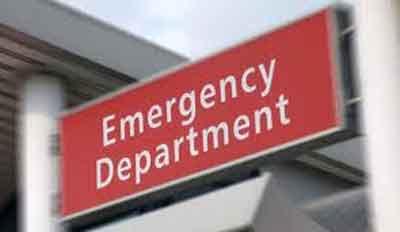- Home
- Editorial
- News
- Practice Guidelines
- Anesthesiology Guidelines
- Cancer Guidelines
- Cardiac Sciences Guidelines
- Critical Care Guidelines
- Dentistry Guidelines
- Dermatology Guidelines
- Diabetes and Endo Guidelines
- Diagnostics Guidelines
- ENT Guidelines
- Featured Practice Guidelines
- Gastroenterology Guidelines
- Geriatrics Guidelines
- Medicine Guidelines
- Nephrology Guidelines
- Neurosciences Guidelines
- Obs and Gynae Guidelines
- Ophthalmology Guidelines
- Orthopaedics Guidelines
- Paediatrics Guidelines
- Psychiatry Guidelines
- Pulmonology Guidelines
- Radiology Guidelines
- Surgery Guidelines
- Urology Guidelines
Intranasal route for administering medications in Emergency: Study

Administering medications through the nose as an alternative to injections or IVs is becoming increasingly popular in emergency departments and ambulances, according to a paper by Loyola Medicine pharmacists.
The intranasal route "is easy, fast and noninvasive," emergency department pharmacist Megan A. Rech, PharmD, MS, and colleagues write in the journal Annals of Emergency Medicine.
To administer a medication through the nose, a nurse or physician attaches a device called an atomizer to a syringe. The device then is placed in the patient's nostril. When the syringe plunger is pushed, a fine mist of medication covers the inside surface of the nose, providing a shortcut to the brain.
The intranasal route requires no needles, is less painful than IVs or injections and minimizes the spread of infectious diseases. For certain patients, including children, the elderly and the obese, the intranasal route also can deliver a medication to the bloodstream more quickly than an injection.
In some patients, IVs and injections are difficult to administer. A patient may be seizing or combative. An IV drug user may have collapsed veins. A child may be afraid of needles. A patient may be wearing multiple layers of clothes. Or it may be difficult and time consuming to obtain an intravenous line.
The review article by Rech and colleagues examined intranasal administration of five common medications used in emergency departments: midazolam (used to tranquilize and sedate children and treat seizures in children and adults); fentanyl (for pain relief); naloxone (for opioid overdoses); ketamine (to induce anesthesia) and dexmedetomidine (to sedate and relieve pain in children).
Previous research has found that, when administered intranasally, midazolam is effective for procedural sedation, anxiety and seizures and fentanyl is safe and effective for managing acute pain. The intranasal route also appears to be an effective alternative for naloxone for opioid overdose. The research to date is less clear on the roles for intranasal ketamine and dexmedetomidine.
The intranasal route has several disadvantages. It's more expensive than IVs and the dose may not be large enough, especially for adults. It cannot be used in certain situations, such as nasal defects or cocaine use that restricts blood vessels. It may irritate nasal membranes and leave an unpleasant taste in the back of the throat.
You can read the full Article by clicking on the link :
Megan A. Rech, Brian Barbas, Whitney Chaney, Elizabeth Greenhalgh, Charles Turck. When to Pick the Nose: Out-of-Hospital and Emergency Department Intranasal Administration of Medications. Annals of Emergency Medicine, 2017; DOI: 10.1016/j.annemergmed.2017.02.015

Disclaimer: This site is primarily intended for healthcare professionals. Any content/information on this website does not replace the advice of medical and/or health professionals and should not be construed as medical/diagnostic advice/endorsement or prescription. Use of this site is subject to our terms of use, privacy policy, advertisement policy. © 2020 Minerva Medical Treatment Pvt Ltd